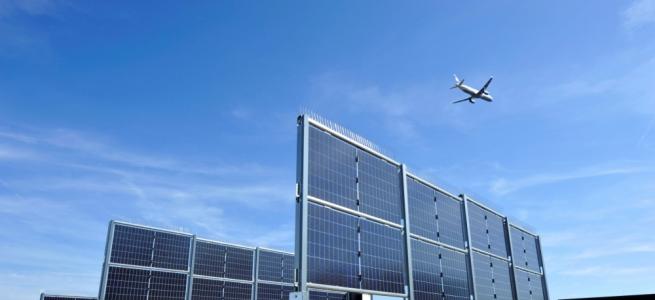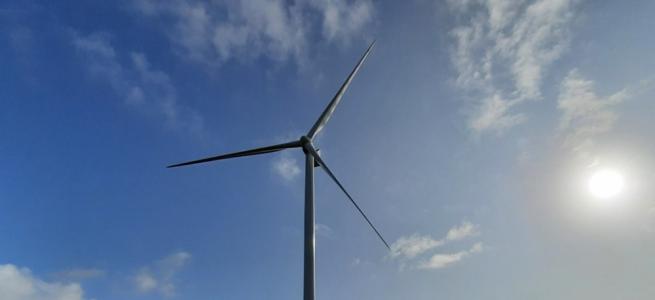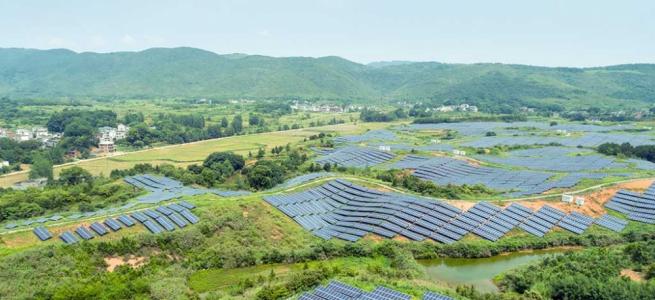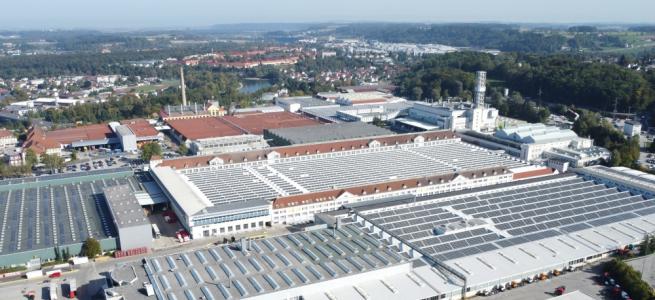Putting solar installations to the test

Electrical inspection and testing of solar PV installations is a fundamental requirement to ensure system safety and performance
By Darren Bakewell, applications engineer at Seaward Solar
The safe operation of solar PV installations under both normal and fault conditions is an essential consideration at the system design stage to ensure that proper energy outputs and safety levels are achieved. And once in operation, it is important to ensure that the long-term performance of the system is not compromised by sub-standard installation or poor maintenance. In this respect, there are some key solar PV system features that rely on adequate and appropriate electrical testing and inspection being undertaken on a regular basis.
• Compliance with IEC 62446
IEC 62446 recommends that periodic verification of an existing installation shall be performed. The standard defines the minimum requirements for system documentation, commissioning tests and inspection for PV systems. As such, this standard not only specifies the minimum electrical testing and inspection requirements but equally importantly how the inspection and test results are documented and supplied to the consumer after installation.
Where appropriate, the results and recommendations of previous periodic verifications shall be taken into account. A periodic verification report shall be provided and include a list of any faults and recommendations for repairs or improvements (such as upgrading a system to meet current
standards).
• Effective grounding
As with all electrical equipment, solar panels and their racking systems must be grounded to mitigate potential electric shocks and fire hazards. If the grounding system degrades over time, anyone who comes into contact with a metal piece of the system may receive a shock. While the likelihood of shock is low, should one occur, the chance of substantial injury is great, because of the high voltage arrays, and the added danger of falling from roof mounted systems.
• Ground faults
PV systems, in particular large-scale systems, have many metres of cabling, much of which is buried underground. Poor levels of insulation will allow energy generated by the PV system to leak to earth. This can be particularly problematic during damp or wet conditions where the insulation monitoring or residual current monitoring function within an inverter prevents the inverter from starting up which in turn can significantly reduce the operational efficiency of the PV installation.
• Environmental degradation
PV systems by their very nature are exposed to the elements. Damage or corrosion to cabling and connectors caused by moisture ingress can result in degradation in performance or increased risk of fire. Regular electrical testing will enable system performance to be monitored and any necessary repairs or remedial actions to be taken
• Surface contamination and physical damage
PV modules can become dirty or contaminated over time and this can reduce the operational efficiency and system performance. Similarly, exposure to the elements can result in physical damage to the component parts of a PV installation. Objects dropped by birds can result in physical damage to PV modules which may result in reduced output performance. Periodic electrical testing as part of regular maintenance will enable any problems to be identified and diagnosed.
• Damage to wiring
The most obvious example of bad wiring is when wires hang below the panels and touch the roof or underlying vegetation. Eventually the wire coating will wear or be damaged by rodent attach and potentially expose the copper wires, presenting a shock hazard. Any deterioration of cable connections and wiring can be identified by applying regular electrical testing to identify potential faults.
• Verification of system performance
The installation of solar PV systems is only undertaken after careful consideration of the costs involved and the potential return on investment provided by lower energy bills and FIT payments. As a result, the verification of system performance and energy output from the panels is particularly important. In many cases simple electrical faults or wiring failures can cause a serious inefficiency in the ability of the panel to produce power. Although proper metering will give an indication of system performance, periodic electrical testing is vital to verify ongoing functional performance over extended periods.
• Warranty fulfilment
Periodic electrical testing of solar PV systems to identify and confirm continued safe operation and maximum energy output performance can be required as part of product warranties and PV system component guarantees.
• Avoiding fire risks
As the number of rooftop solar installation systems have grown over the years, so have the number of reported incidents of fires. Household fires started by electrical faults in rooftop solar PV systems have been reported in the UK, Australia, the USA and France – among others. The periodic testing of the electrical cabling and components associated with solar PV systems will ensure the safe operation of the system and reduce the potential fire risk associated with any electrical faults.
• Customer documentation
All solar PV installations require the provision of various documentation and forms to the customer. System documentation usually includes system data, installer details, electrical diagrams, operation and maintenance instructions and other information that may be required by certain standards or regulatory bodies. Copies of all test and commissioning data should also be provided and as a minimum this should include the results from the electrical safety and verification tests undertaken as part of the system installation procedures.
The importance of electrical inspection and testing of solar PV installations to ensure system safety and performance is reflected in the work RAPS Solutions undertakes in Malaysia to ensure rooftop solar power panels installed at the Goodyear Malaysia vehicle tyre manufacturing centre operate safely and at peak performance levels.
More than 6,680 solar panels are in use at Goodyear’s Shah Alam facility to power its corporate office as well as production plant, contributing towards securing a more sustainable energy supply under plans to reduce its carbon footprint. The PV system, which features several ground-mounted 50-Megawatt (MW) solar panels, is capable of producing 2.5-mega-watts of power connected to six Low Voltage (LV) substations located within the plant to power production plant, offices and warehouse buildings.
It’s estimated that using PV technology will cut carbon emissions by almost two million kilograms over 25 years while simultaneously reducing Goodyear Malaysia’s reliance on fossil fuels and overall energy costs.
It’s therefore important that on-site electrical testing and maintenance work is carried out effectively - and to the highest technical standards and this sees the Seaward Solar Utility Pro used for the testing of multiple strings in parallel while open circuit voltage (Voc), short circuit current (Isc), irradiance (W/m2) and ambient temperature are simultaneously checked.
The tester’s 40A current capability can test parallel wired strings up to a maximum of 1500V/ 40A/ 45kW, eliminating the time-consuming task of separating strings and provides values for open circuit voltage and short circuit current, and when paired with an irradiance meter, will record irradiance, module and ambient temperature measurements.
Testing at the Goodyear site is supported by electrical services specialists RAPS Solutions whose technical director Subaramanniam Arumugam said it’s important to ensure the solar panels produce energy safely and efficiently. This must also include the capacity to determine how well individual units are working and to identify and rectify any faults quickly.
“It’s essential that the panels are capable of generating the required power during daytime to ensure the factory operates efficiently,” he added. “This requires regular testing for accurate fault diagnosis and repairs, but also associated capabilities such as remote monitoring, data collection and analysis, and the transfer of on-site measurements and results to a database.”
More at https://www.seaward.com/gb/products/solar/


































